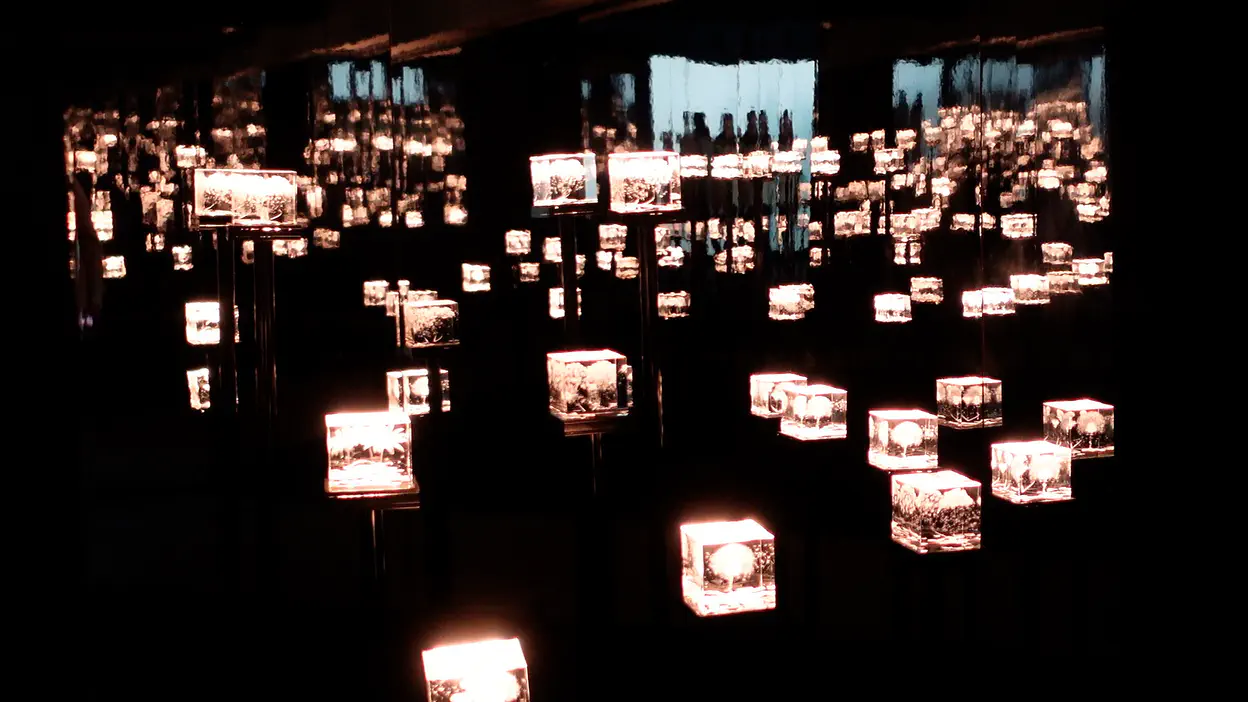Bees: A Story of Survival
World Museum Liverpool

The latest temporary exhibition at World Museum Liverpool sees the museum partner with multi-disciplinary artist Wolfgang Buttress to produce a fascinating insight into the world of bees, how they have adapted to survive since the time of the dinosaur, and how vital they are to the survival of humanity.
The exhibition blends interactive displays, sculptures, lights and media across 8 different rooms.
The first room contained detailed information about bees, with computer displays covering everything from the anatomy of a bee through to the different species of bees around the world. This room is the most traditional museum element of the exhibition before the remaining rooms move more into an art exhibition. Our highlights from this first room included the discovery that bees evolved from wasps (we’d always thought it was the other way round), and that Vulture Bees exist in South America that are carnivores which feed on rotting meat.
The subsequent rooms featured innovative light and sculptures that allowed you to experience life as bees do. The visual displays of how a bee sees (blues, yellows and ultra violet), and how flowers appear to a bee were fascinating, whilst the room entitled ‘Symphony’ was a fun interactive space that projected your image onto a screen and any movements created a sound so that you became a musical instrument.

Sound plays an important part in this exhibition. Along with the visual elements, a soundscape has been created using the audio of a beehive. This was a beautiful addition that we found extremely relaxing, and also quite moving as the sound seemed to reflect some of the more serious elements that underpin the entire exhibition; bees are at risk primarily because of the loss of their habitat.
The exhibition space within the World Museum Liverpool is transformed by the use of intricate structures which create corridors around the different sculptural and audio-visual elements. Whilst these structures are visually impressive, they do create fairly narrow spaces which some people may find slightly claustrophobic. The structures also seem to be made from a plastic covering which doesn’t feel the most environmentally friendly given the nature of the exhibition.
This is also a very dark exhibition, particularly due to the dark wood panelling and low lighting that is used throughout. If you are someone who suffers from visual impairments in low light then you may struggle navigating the exhibition. Whilst there are no steps, there are some very slight ramps and flooring changes which could prove problematic. The transition from the first room into the first art element in particular is in near darkness.

As with previous temporary exhibitions at the World Museum Liverpool, access is via timed entry to control the number of people flowing through at the same time. We entered at 11am and spent just over an hour within the exhibition. We never felt rushed, and could move through at our own pace as there is no time restriction on how long you take.
There is an additional charge for this exhibition. Adult entry is £12, children aged 12 to 17 is £5, and children aged 11 or under as well as museum members can enter for free. Even with free entry, pre-booking your entry time is essential.
Bees: A Story of Survival is on until 5 May 2025.
If you want to see a video of the exhibition, our YouTube channel has a highlights video and review.
Originally posted: